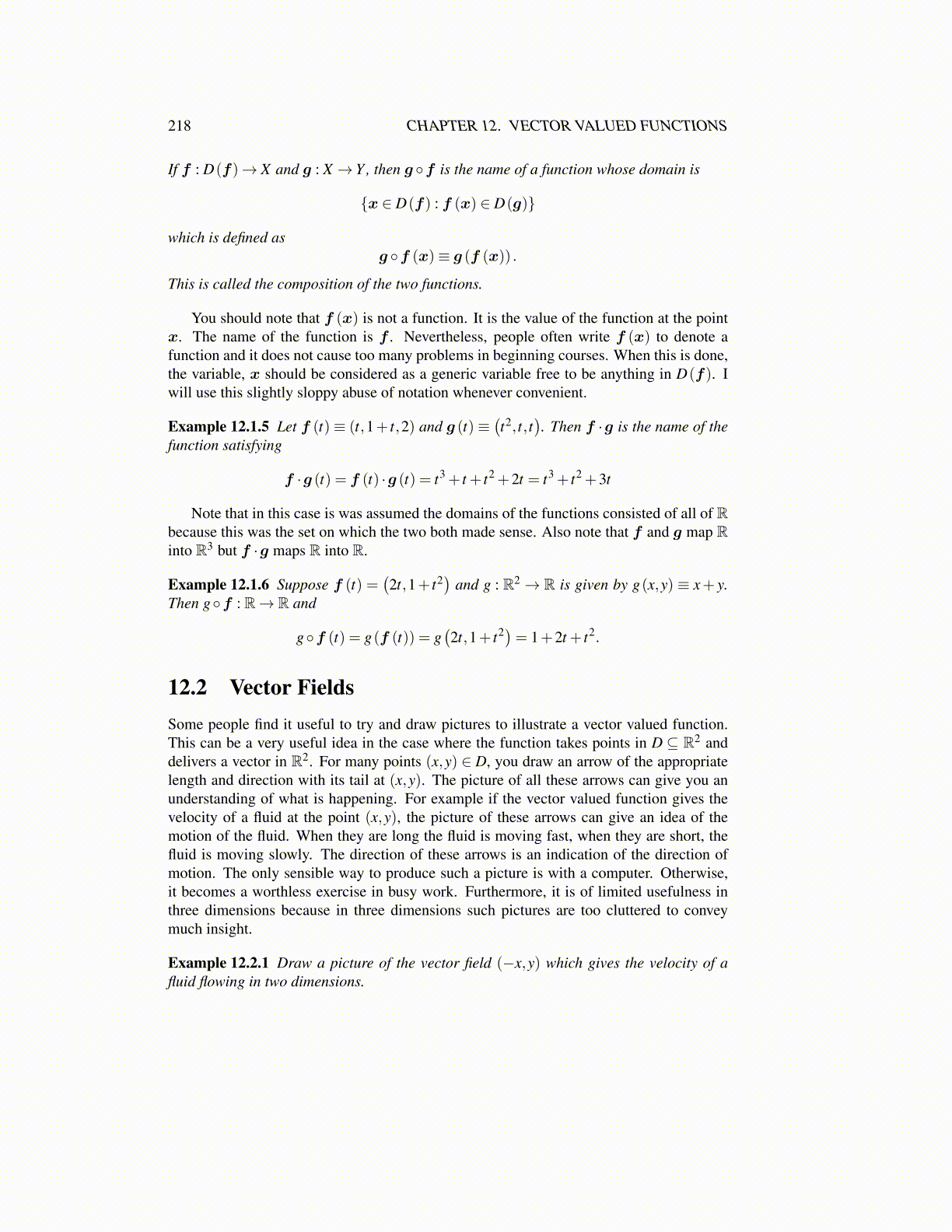
218 CHAPTER 12. VECTOR VALUED FUNCTIONS
If f : D(f)→ X and g : X → Y , then g ◦f is the name of a function whose domain is
{x ∈ D(f) : f (x) ∈ D(g)}
which is defined asg ◦f (x)≡ g (f (x)) .
This is called the composition of the two functions.
You should note that f (x) is not a function. It is the value of the function at the pointx. The name of the function is f . Nevertheless, people often write f (x) to denote afunction and it does not cause too many problems in beginning courses. When this is done,the variable, x should be considered as a generic variable free to be anything in D(f). Iwill use this slightly sloppy abuse of notation whenever convenient.
Example 12.1.5 Let f (t)≡ (t,1+ t,2) and g (t)≡(t2, t, t
). Then f ·g is the name of the
function satisfying
f ·g (t) = f (t) ·g (t) = t3 + t + t2 +2t = t3 + t2 +3t
Note that in this case is was assumed the domains of the functions consisted of all of Rbecause this was the set on which the two both made sense. Also note that f and g map Rinto R3 but f ·g maps R into R.
Example 12.1.6 Suppose f (t) =(2t,1+ t2
)and g : R2 → R is given by g(x,y) ≡ x+ y.
Then g◦f : R→ R and
g◦f (t) = g(f (t)) = g(2t,1+ t2)= 1+2t + t2.
12.2 Vector FieldsSome people find it useful to try and draw pictures to illustrate a vector valued function.This can be a very useful idea in the case where the function takes points in D ⊆ R2 anddelivers a vector in R2. For many points (x,y) ∈ D, you draw an arrow of the appropriatelength and direction with its tail at (x,y). The picture of all these arrows can give you anunderstanding of what is happening. For example if the vector valued function gives thevelocity of a fluid at the point (x,y), the picture of these arrows can give an idea of themotion of the fluid. When they are long the fluid is moving fast, when they are short, thefluid is moving slowly. The direction of these arrows is an indication of the direction ofmotion. The only sensible way to produce such a picture is with a computer. Otherwise,it becomes a worthless exercise in busy work. Furthermore, it is of limited usefulness inthree dimensions because in three dimensions such pictures are too cluttered to conveymuch insight.
Example 12.2.1 Draw a picture of the vector field (−x,y) which gives the velocity of afluid flowing in two dimensions.